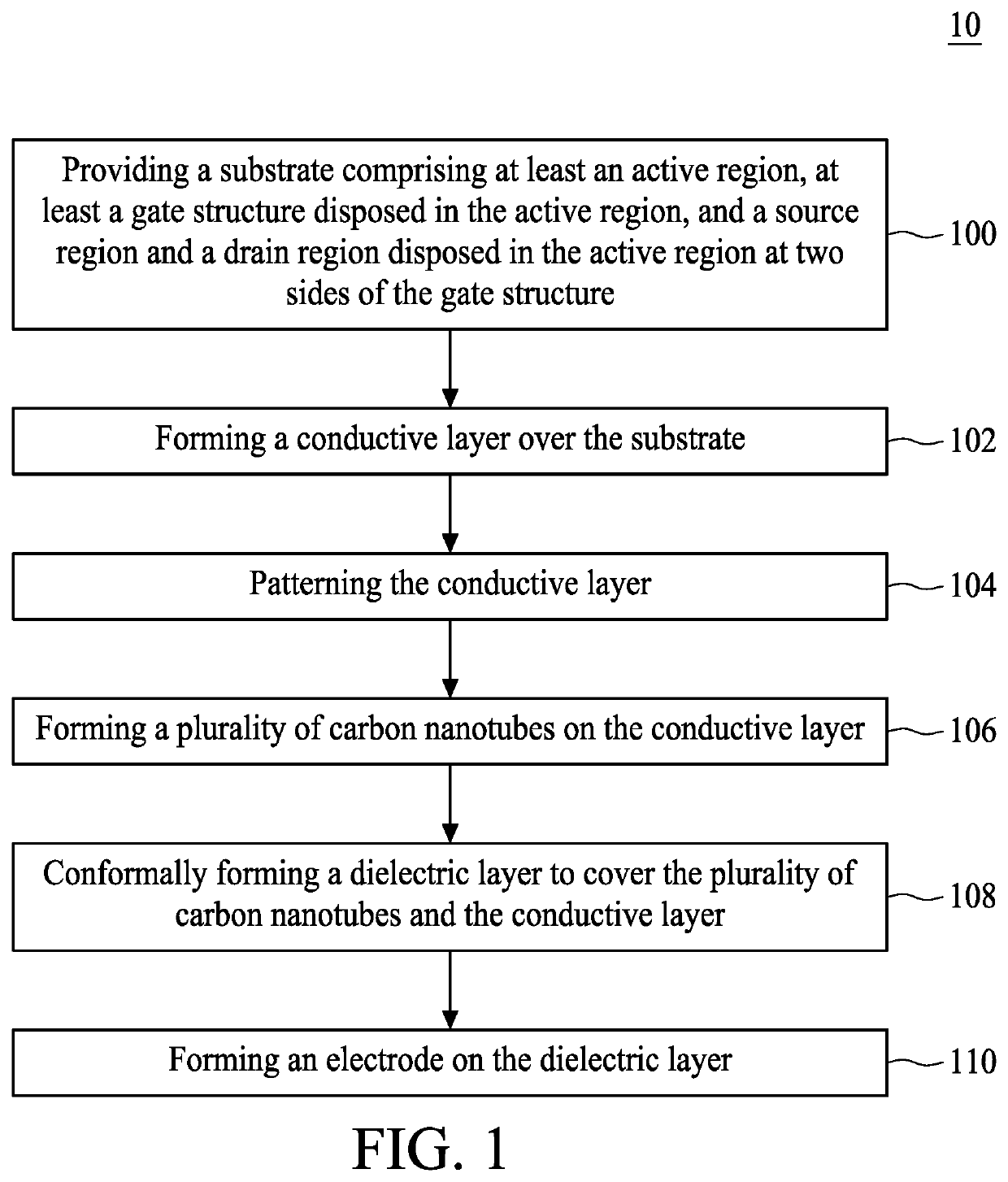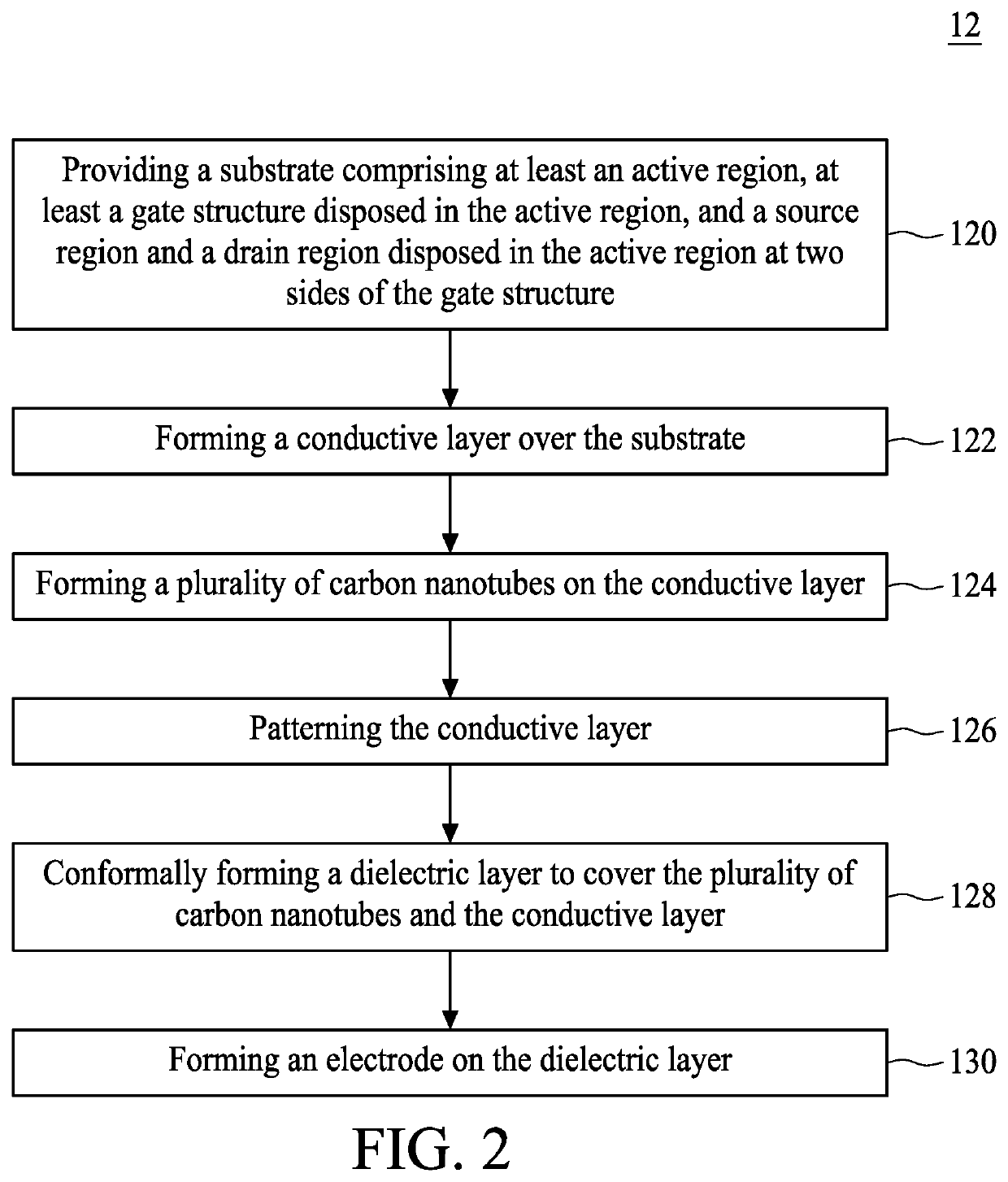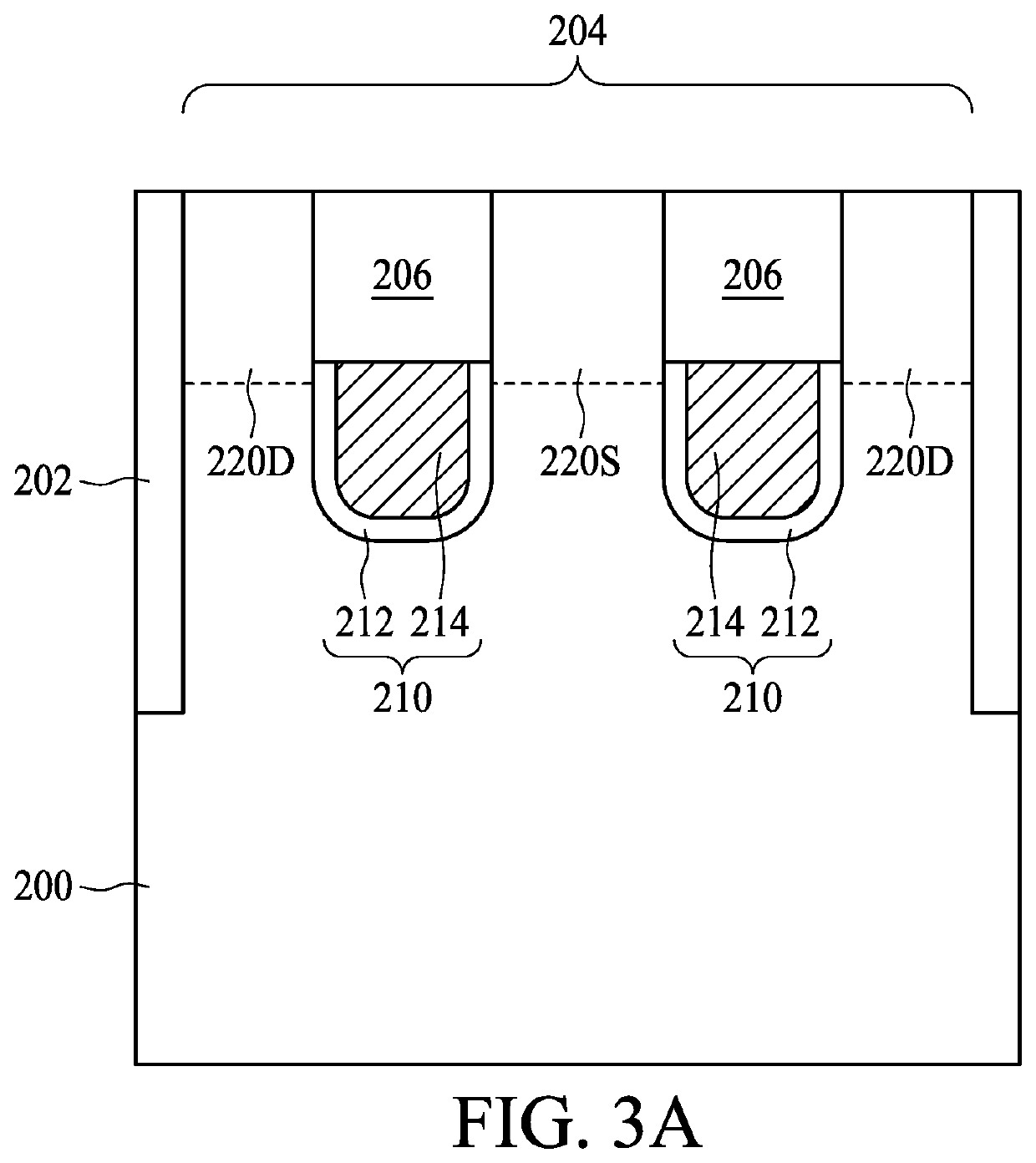Dynamic random access memory structure and method for preparing the same
a random access memory and dynamic technology, applied in nanoinformatics, instruments, transistors, etc., can solve the problems of affecting the formation of capacitors, and reducing the size of the bottom electrode, so as to achieve superior stiffness and strength, and increase the length-to-diameter
- Summary
- Abstract
- Description
- Claims
- Application Information
AI Technical Summary
Benefits of technology
Problems solved by technology
Method used
Image
Examples
first embodiment
[0039]FIG. 1 is a flow diagram illustrating a method for preparing a DRAM cell structure in accordance with the present disclosure. The method for preparing the DRAM cell structure 10 includes a step 100, providing a substrate. The substrate can include at least an active region, at least a gate structure disposed in the active region, and a source region and a drain region disposed in the active region at two sides of the gate structure. The method for preparing the DRAM cell structure 10 further includes a step 102, forming a conductive layer over the substrate. The method for preparing the DRAM cell structure 10 further includes a step 104, patterning the conductive layer. The method for preparing the DRAM cell structure 10 further includes a step 106, forming a plurality of carbon nanotubes on the conductive layer. The method for preparing the DRAM cell structure 10 further includes a step 108, conformally forming a dielectric layer to cover the plurality of carbon nanotubes and...
second embodiment
[0040]FIG. 2 is a flow diagram illustrating a method for preparing a DRAM cell structure in accordance with the present disclosure. The method for preparing the DRAM cell structure 12 includes a step 120, providing a substrate. The substrate can include at least an active region, at least a gate structure disposed in the active region, and a source region and a drain region disposed in the active region at two sides of the gate structure. The method for preparing the DRAM cell structure 12 further includes a step 122, forming a conductive layer over the substrate. The method for preparing the DRAM cell structure 12 further includes a step 124, forming a plurality of carbon nanotubes on the conductive layer. The method for preparing the DRAM cell structure 12 further includes a step 126, patterning the conductive layer. The method for preparing the DRAM cell structure 12 further includes a step 128, conformally forming a dielectric layer to cover the plurality of carbon nanotubes and...
PUM
| Property | Measurement | Unit |
|---|---|---|
| length | aaaaa | aaaaa |
| diameter | aaaaa | aaaaa |
| diameter | aaaaa | aaaaa |
Abstract
Description
Claims
Application Information
 Login to View More
Login to View More - R&D
- Intellectual Property
- Life Sciences
- Materials
- Tech Scout
- Unparalleled Data Quality
- Higher Quality Content
- 60% Fewer Hallucinations
Browse by: Latest US Patents, China's latest patents, Technical Efficacy Thesaurus, Application Domain, Technology Topic, Popular Technical Reports.
© 2025 PatSnap. All rights reserved.Legal|Privacy policy|Modern Slavery Act Transparency Statement|Sitemap|About US| Contact US: help@patsnap.com



